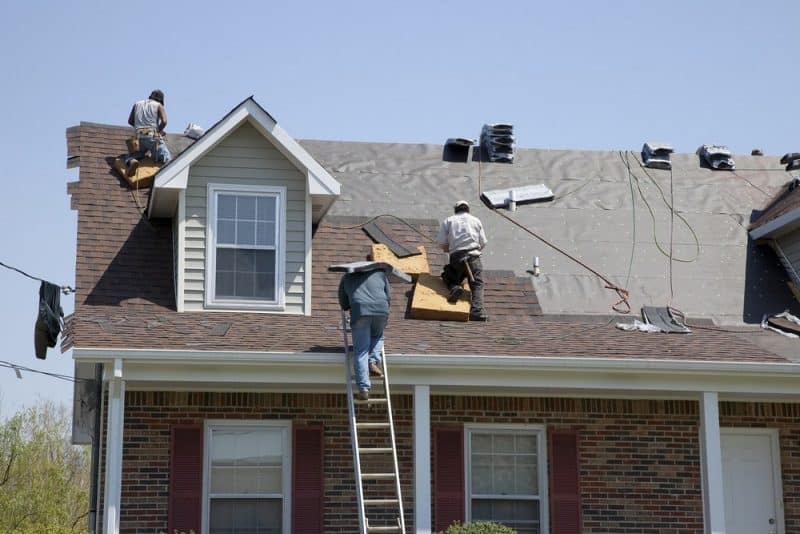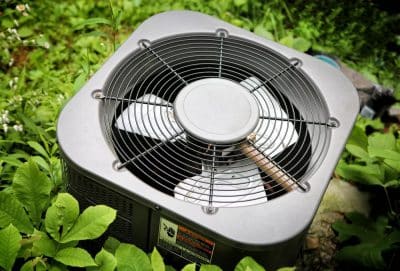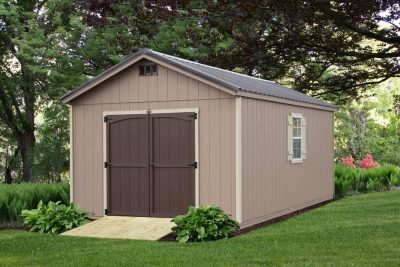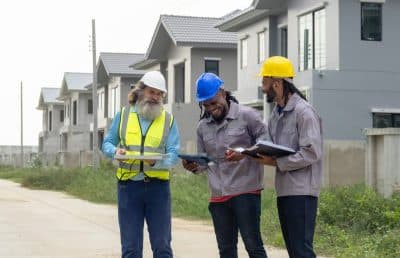
In areas prone to weather extremes, roof architecture resilience is not only a matter of convenience but also of safety and security. From hurricanes slamming coastal areas to tornadoes blasting through the heartland, nature’s fury necessitates long-lasting solutions. In this guest post, we welcome you to learn about resilient roof construction, designed specifically for locations prone to harsh weather.
Imagine a roof that provides companies and homeowners with peace of mind by not only providing shelter but also demonstrating strength against the elements of wind, rain, and hail. Architects and roofing specialists are creating roofs that not only withstand storms but also emerge undamaged, prepared to take on any challenge that Mother Nature poses with their innovative designs, resilient materials, and strategic planning.
In this post, let’s embark on a journey to discover resilient roof solutions that safeguard homes and businesses in areas with extreme weather.
Understanding Weather Extremes
Before diving into the nuances of resilient roof construction, it is essential to understand the types of weather extremes that influence design. Every type of weather event, including hurricanes, tornadoes, and hailstorms, poses a different set of risks to roof structures.
Let’s examine these weather extremes and how they affect the design and composition of roofs.
Hurricanes: Battling the Winds and Rain
Hurricanes are powerful meteorological events known for their devastating power. They bring with them storm surges, intense rain, and strong winds, with winds reaching up to 74 miles per hour (119 kilometers per hour) or more. Roof structures may experience uplift, where wind forces lift roofing materials and create openings for water intrusion. Additionally, high winds can displace or tear off shingles, tiles, or panels, leaving the underlying structure vulnerable to water damage.
To combat the effects of hurricanes, resilient roof architecture must prioritize durability and wind resistance. This includes using impact-resistant roofing materials, such as asphalt shingles with high wind ratings or metal roofing systems designed to withstand hurricane-force winds. Proper installation techniques, such as strengthened roofing trusses and secure fastening systems, are also necessary to ensure structural integrity during extreme weather events. Adding elements like reinforced sheathing and roof overhangs can reduce wind uplift and shield the roof substrate from water intrusion.
Tornadoes: Facing the Fury of Nature’s Twists
In a matter of minutes, strong, whirling columns of air known as tornadoes can inflict enormous devastation. Tornadoes’ powerful winds can put a great deal of pressure on roof structures, which can cause shingle loss, roof deck uplift, and even roof collapse. Tornado winds’ spiraling motion can also produce suction forces that lift roofs off their foundations or deform structural elements.
Resilient roof design is crucial for minimizing damage and ensuring human safety in tornado-prone areas. This involves using reinforced roofing materials—such as metal roofing panels or impact-resistant asphalt shingles—that can withstand strong winds and impact forces. Aerodynamic roof designs, including hip roofs or curved profiles, can also lessen the chance of roof uplift by lowering wind resistance. Enhancing structural resilience and minimizing roof failure during tornado occurrences also requires the use of proper decking, roofing underlayment, and anchoring and bracing systems.
Hailstorms: Weathering the Impact of Ice Pellets
Roofs are at serious risk from hailstorms, especially in areas where extreme weather is common. Hailstones can range in size from tiny pellets to massive slabs of ice, and when they hit roofing materials, they can cause serious damage. Common damage includes broken tiles, dented metal roofing, pierced shingles, and lost granules on asphalt shingles.
Resilient roof design emphasizes the use of impact-resistant roofing materials and building methods to guard against hail damage. This can entail choosing Class 4 impact-resistant roofing materials, including metal roofing systems with heavy gauge panels or asphalt shingles with fiberglass matting. Installing safeguards like impact- and hail-resistant coatings and roofing underlayment can also help reduce the chance of damage during hailstorms. For the roof to last longer and provide continuous protection from future hailstorms, proper care is also necessary, including routine inspections and quick repairs of any hail-related damage.

Designing for Resilience
Strength, flexibility, and durability are important considerations in resilient roof building. Innovative materials and methods designed to survive the rigors of weather extremes including hurricanes, tornadoes, and hailstorms are used by architects and roofing specialists.
Durability
By carefully choosing strong materials that can withstand the force of strong winds, flying debris, and hail, durability is achieved. This may involve impact-resistant materials like metal panels or asphalt shingles, reinforced roofing underlayment, and decking to improve structural integrity and guard against water intrusion.
Strength
Secure connection techniques and structural reinforcements designed to withstand shear, uplift, and other pressures applied by extreme weather conditions ensure strength. Heavy-duty fasteners, hurricane straps, and bracing systems must be used to tie the roof to the building’s framework to prevent detachment or collapse.
Flexibility
Strength and durability are complemented by flexibility, which enables the roof to adjust to changing weather conditions without sacrificing functionality. This could entail utilizing design elements that can handle structural shifts brought on by weather conditions, such as flexible flashing, resilient roofing membranes, and expansion joints. These elements can also handle thermal expansion and contraction.
By embracing these principles of resilience in roof design, architects and roofing professionals can create structures that provide reliable protection against weather extremes, ensuring the safety and security of occupants and assets beneath them.

The Role of Commercial Roofing Solutions
Commercial buildings provide particular roofing challenges that call for solutions prioritizing longevity, cost-effectiveness, and durability. This section will examine the vital function that commercial roofing systems play in offering businesses and their assets durable protection.
Commercial Roofing Materials: Ensuring Long-Term Performance
Commercial roofs must be made of materials that are strong enough to endure the strains of heavy foot traffic, equipment installations, and weather exposure. Premium membranes with low maintenance requirements, exceptional durability, and weather resistance, such as TPO (thermoplastic polyolefin), EPDM (ethylene propylene diene terpolymer), and PVC (polyvinyl chloride), are the best solutions for commercial roofing applications.
Professional Installation and Maintenance: Preserving Roof Performance
To maximize the longevity and performance of commercial roofing, proper installation and routine maintenance are crucial. Hiring skilled roofers reduces the chance of leaks, structural damage, and early failure by ensuring that materials are installed appropriately. In addition, regular maintenance tasks like sealant repairs, gutter cleaning, and prompt attention to small problems help avert expensive repairs and extend the life of the roof.
Energy Efficiency and Sustainability: Enhancing Building Performance
By lowering operating expenses and their negative effects on the environment, commercial roofing solutions can also help achieve sustainability and energy efficiency goals. Cool roofing materials cut cooling costs and increase indoor comfort by reflecting sunlight and reducing heat absorption. Examples of these materials are white TPO or PVC membranes. In keeping with contemporary sustainability objectives, adding solar panels or green roofing systems can further improve energy efficiency and encourage environmental care.
By prioritizing durable materials, professional installation, and proactive maintenance, commercial roofing solutions play a crucial role in safeguarding businesses and their assets against weather extremes while enhancing energy efficiency and sustainability.
Get A Trusted Partner for Your Commercial Roofing Needs
Choose a local company that takes pride in being an all-in-one solution for all roofing needs. They need to have a commitment to quality, provide free estimates, and guarantee satisfaction.
Quality Roofing Services for Business Owners
Roof Pro Local provides a range of residential and commercial roofing services that are specifically designed to fulfill the demands of businesses, acknowledging the uniqueness of every roofing job in OKC. Their fully insured skilled roofing crews are committed to providing excellent workmanship, regardless of the type of roof work they are doing, whether it be replacements, installs, or repairs. They provide businesses peace of mind by making sure the entire project area is thoroughly cleaned up after completion.
Weather Damage
Roofs can be severely damaged by Oklahoma’s erratic weather, which includes tornadoes, hail, strong winds, and thunderstorms. If this tension is not managed right away, it can cause serious problems for businesses and homeowners.
Future Trends and Technologies
Future developments in technology and trends could completely change the way that roofs are constructed, maintained, and designed as the roofing industry develops further. A noteworthy trend that is being driven by a growing awareness of energy efficiency and environmental concerns is the increasing incorporation of green technologies and sustainable materials into roofing systems.
Furthermore, the use of sensors, drones, and artificial intelligence in smart roofing is revolutionizing roof monitoring and maintenance procedures by enabling early problem detection and predictive maintenance plans. In addition, cutting-edge materials like solar-integrated roofing solutions and self-healing membranes are opening the door for more resilient, long-lasting, and energy-efficient roofs that can withstand the demands of the built environment of the future.
As these trends and technologies continue to unfold, the future of roof design promises to be both exciting and transformative, offering new possibilities for sustainability, efficiency, and performance.








